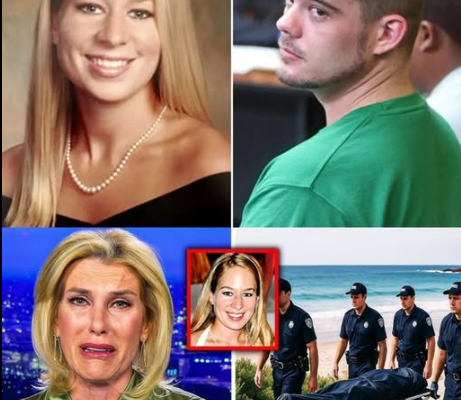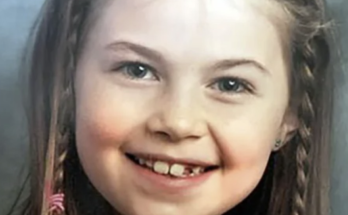
20 Years Later, The Natalee Holloway Mystery Is Finally Solved — And It’s Bad
It has been two decades since the disappearance of Natalee Holloway shocked the world. In May 2005, the bright, 18-year-old high school graduate from Alabama vanished while on a senior trip to Aruba. Her case became one of the most haunting mysteries of the early 2000s — a story of hope, heartbreak, and frustration that spanned continents, captivated millions, and left a family forever changed. Now, 20 years later, the mystery has finally reached a devastating conclusion.
The Beginning of the Nightmare
Natalee was last seen leaving a nightclub in Oranjestad, Aruba, with a Dutch college student named Joran van der Sloot and two brothers, Deepak and Satish Kalpoe. Her classmates thought she’d return to the hotel later that night, but she never did. When she failed to show up for her flight home, panic spread instantly. Her mother, Beth Holloway, flew to Aruba within hours, launching what would become one of the most publicized missing-person searches in modern history.
The Aruban authorities faced heavy criticism for what many saw as mishandling the investigation. Early leads were ignored, statements changed, and searches were often disorganized. As the days turned to weeks, the island’s paradise image was replaced by one of mystery and suspicion. Despite countless searches — on land, sea, and air — no trace of Natalee was ever found.
Endless Theories and False Leads
Over the years, the case was plagued by a series of twists and false confessions. Joran van der Sloot, who quickly became the prime suspect, was arrested multiple times but always released for lack of evidence. He offered shifting versions of what happened — claiming at one point she had died accidentally, at another that he had sold her into human trafficking. Each new statement reignited public interest and reopened wounds for the Holloway family, only for them to discover it was another cruel lie.
Dozens of volunteers, private detectives, and television crews descended on Aruba, determined to find answers. Natalee’s mother became a relentless advocate, refusing to let the world forget her daughter’s name. But years passed, and hope faded. The case turned cold, and the island’s tourism suffered as the shadow of the tragedy lingered.
A Chilling Turn in 2010
In a grim twist of fate, five years after Natalee’s disappearance, van der Sloot resurfaced in Peru — this time accused of another brutal crime. In 2010, he was arrested for the murder of Stephany Flores, a 21-year-old Peruvian student he had met at a casino. Flores was found beaten to death in his hotel room. The eerie similarities to Holloway’s case were impossible to ignore.
Van der Sloot eventually confessed to killing Flores and was sentenced to 28 years in a Peruvian prison. The conviction brought some measure of justice — but not closure. Natalee’s body was still missing, and her family had no official confirmation of what had truly happened on that night in Aruba.
The Long-Awaited Confession
Then, nearly 20 years after that fateful night, the truth finally emerged. In 2023, while serving his sentence in Peru, Joran van der Sloot was extradited temporarily to the United States to face extortion charges. Years earlier, he had attempted to extort $250,000 from Beth Holloway in exchange for “information” about her daughter’s remains. During plea negotiations, something unexpected happened — he finally confessed.
In a chilling statement, van der Sloot admitted that he had killed Natalee Holloway. According to his confession, he attacked her after she rejected his advances, hitting her with a cinder block before disposing of her body in the ocean. His detailed account matched forensic clues and filled in the gaps that had baffled investigators for years.
The confession, though horrifying, brought the clarity that Beth Holloway had waited nearly two decades to hear. Standing outside the courthouse, she told reporters, “Today, I can finally say — Natalee’s case is solved. Joran van der Sloot is the killer.”
The Pain That Never Ends
For Natalee’s family, this wasn’t justice in the traditional sense — it was survival. They had lived through years of torment, scams, and speculation, only to learn that the truth was even darker than they imagined. There would be no miraculous discovery, no joyful reunion. The answers came too late to heal the loss.
The Holloways’ ordeal also exposed flaws in international justice systems — from ineffective investigations to limited cooperation between countries. It became a case study in how privilege, corruption, and jurisdictional boundaries can hinder justice for victims abroad. The media circus that surrounded the case also raised ethical questions about sensationalism and the public’s obsession with true crime.
The Legacy of Natalee Holloway
Though the mystery has been solved, Natalee’s story continues to echo through time. Her name has become synonymous with the dangers young travelers can face, and her disappearance led to new awareness campaigns for missing persons abroad. Beth Holloway turned her pain into purpose, founding organizations to help families in similar situations.
The case has also influenced pop culture — inspiring documentaries, books, and countless true-crime programs. But behind the cameras and headlines lies the real story: a mother’s love that refused to fade, a young woman whose life was stolen too soon, and a world that learned how fragile safety can be.
A Bitter Resolution
The final truth about Natalee Holloway’s fate is both a relief and a tragedy. Relief that the endless questions have finally been answered — tragedy that those answers are soaked in violence and deception. Twenty years later, the world finally knows what happened.
But for those who loved Natalee, closure doesn’t mean peace. Her story remains a warning, a symbol of resilience, and a reminder that evil can hide behind the face of charm.
Beth Holloway once said, “I will never stop loving my daughter, but now I can let her rest.”
After twenty long years, the world can finally let her rest too — though the heartbreak of what was lost will never truly fade.

